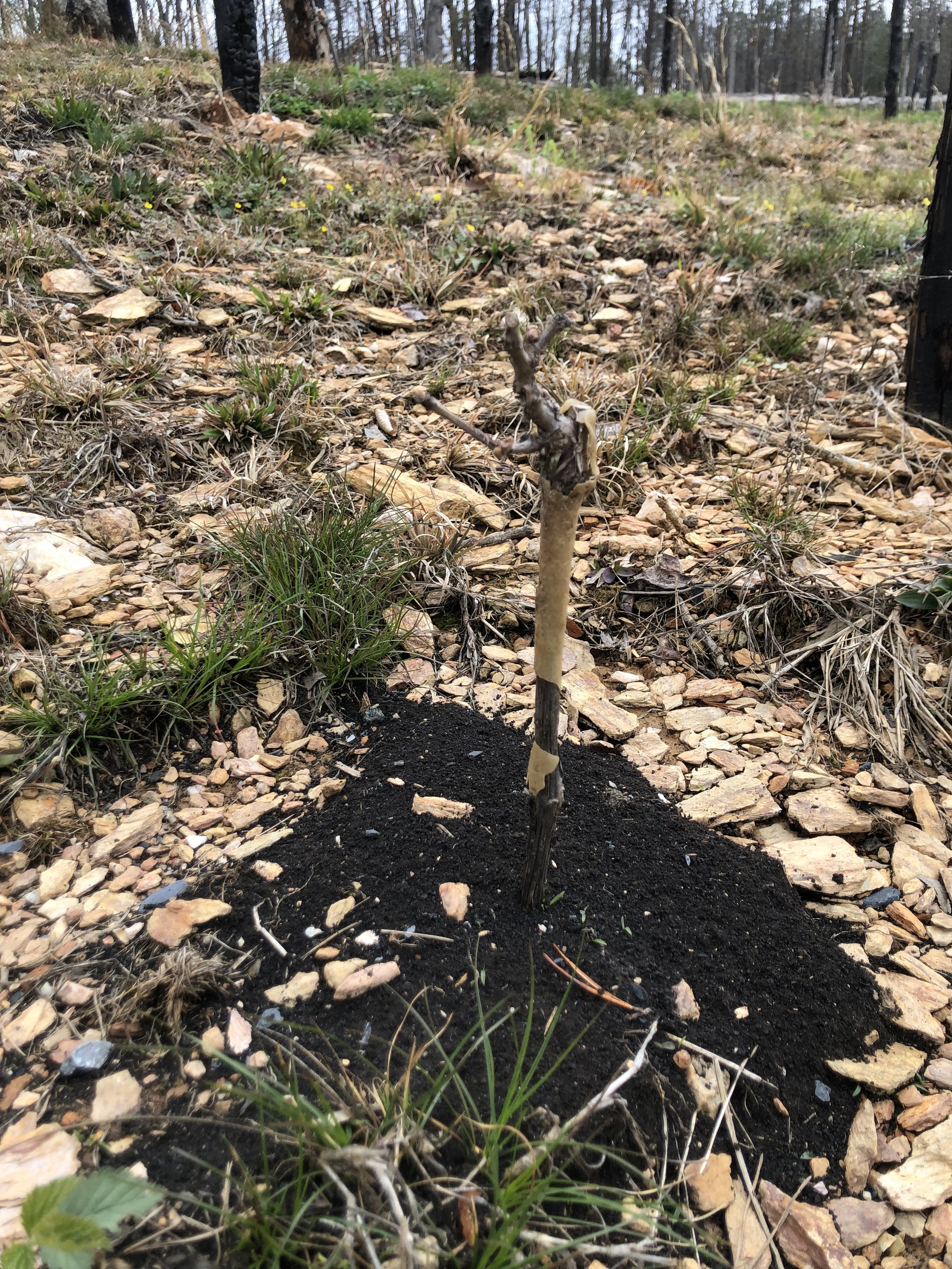The Beginning
We began final pruning on the Petit Verdot during the first week of April. Petit Verdot is the most sensitive to spring warming and therefore begins to break bud right on the cusp of the last frost. We delay because pruning stimulates the vine to open its buds, but once the vines begin we need to finalize our cuts to focus the vine's limited energy. April generally witnesses winter's last gasp, so we watch and worry as the weather forecast projects phantoms of reprieve and disaster on a weekly basis. In 2020, a Mother’s Day frost took the entire crop from our mature Petit Verdot planting and killed about 3/4 of a block of one-year-old vines, so we're painfully aware that our Petit Verdot exists on the knife’s edge in our microclimate. Fortunately, each successive year of age in the vines causes them to delay bud break by a day or two, and so our oldest PV planting (on their 7th leaf now) started to break bud in mid-April, and thus was able to recover from this year's last hard frost on April 18th. The Cabernet Sauvignon gets rolling about a week after PV, and so it bounced back from this year's frost damage as well — there are losses to this year's yield, but they are tolerable losses. We made it through the frost season and so looks like we will be granted the opportunity to make wine once again.
The Passage of Time
In early spring we took stock of our wine-producing history: 7 different wines spanning 4 vintages from 2018 to 2021. There is considerable variation amongst vintages due to the vagaries of weather, but some consistent themes are emerging including aromas of cherry, anise, lavender, and blackberry, and a delicate yet persistent tannic backbone. It is the tannins that are immediately captivating (to me), and they appear to be increasing in amount and fineness in each successive vintage — whether due to vine-age, weather variation, or a steady evolution of vineyard practices we simply do not know, but perhaps in another decade we’ll have some answers. We are just on the edge of beginning to take appointments for visitors, so in a short while we’ll be able to share these with you and you can taste them for yourself. In the meantime, we are on the shelf at Belmont Butchery, the Barrel Thief and Common House in Richmond, and they’d love to have you drop by and pick up some wine.
When They Go Low We Go High
The newest block of vines in the Mount Alto compound is celebrating its one-year anniversary. The “Sammy Smith” block is planted on some land that David acquired and cleared a few years back. The goal was to find the least fertile piece of ground possible: goal achieved. Pictured below, the soil is largely composed of fractured rock, and thus, we opted to meet low vigor soil with a high vigor Cabernet clone that is reputed to deliver “high-quality wine when yields are controlled”. Experience tells us that excess yields are not a problem in this type of soil. The vines that we have planted on a similar soil yield less than half the industry standard, so we thought we’ll amend the vines with compost and see what happens — only 4 more years to wait to taste the results. The vines that grow in these low vigor soils are so relaxed and balanced, that we often just breeze by them without needing to thin the shoots during spring's first flush. In this new block, we are two years in and some of these vines have needed no mowing at all, though to be honest, smoothing their “rock mulch” can be back-breaking labor.
We grow rocks. And we’re damn good at it. Pictured just before bud-break in early April, this Cabernet Sauvignon is planted on Manteo silt loam, a shallow soil characterized by abundant fragments of schist and slate.
A Wine Production Facility
This winter we began to cut timber beams from a stand of red cedar trees that grew on the northwest corner of our property. This fall we will begin our most ambitious construction project to date: a wine production space. Past performance indicates that this will be a slow process, but we are patient people. In addition to being sized and shaped to be “just-so” for our fermentation needs, the building will be formed largely of materials sourced on the farm, timber-framed and straw-bale walls sitting atop an earthen foundation.
A 6x6 timber cut from Mount Alto red cedar will form the basic infrastructure for our new winery. Photo by MAV partner Camila Burda (@burdac on instagram).


